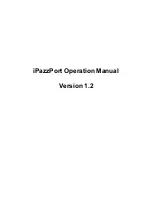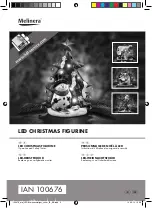
WG AQS/TH-UP sensor
2
WG AQS/TH-UP sensor
• Version: 19.12.2018 • Technical changes and errors excepted. • Elsner Elektronik GmbH • Sohlengrund 16 • 75395 Ostelsheim • Germany • www.elsner-elektronik.de •
Technical Service: +49 (0) 7033 / 30945-250
2.2. Construction of the sensor
2.2.1. Housing
2.2.2. Rear view of the baseplate (circuit board) with connection
2.3. Sensor assembly
1. First, place the windproof box with the supply connection. Seal the inlet tubes as
well, in order to prevent drafts.
5. Then screw the baseplate (circuit board) on to the box. The lettering OBEN/TOP
must be at the top and at the front.
6. Position the frame of the switch series and firmly put the sensor housing with the
latches onto the baseplate (circuit board) so that this is fixed to the frame.
2.4. Notes on mounting and commissioning
Never expose the device to water (e.g. rain) or dust. This can damage the electro-
nics. You must not exceed a relative humidity of 95%. Avoid condensation.
2.5. Establish wireless connection
1. Set the control system to teaching (follow the chapter
Teaching wireless connec-
tion
in the manual).
2. Press the programming button on the
WG AQS/TH-UP sensor
3. Observe the response from the control system ("device taught").
Fig. 1
1 Baseplate (circuit board)
2 Catches
3 Openings for air circulation
4 Programming LED (recessed)
5 Programming button (recessed) for
teaching the device
6 Openings for air circulation
(LOWER)
3
2
5
4
6
1
Fig. 2
1 Catches
2 Terminal power supply 11…30 V DC
(+/-), Connection polarity independent
3 CO
2
socket - sensor unit
4 CO
2
plug - sensor unit
5 CO
2
sensor unit
Cable length approx. 110 mm
a Hole distance approx. 43 mm
b Membrane diameter approx. 18 mm
2
1
3
4
5
a
b
2. Connect the CO
2
sensor to the sensor circuit board.
3. Connect the power supply.
4. Place the CO
2
sensor unit into the box. The side with the
sensor membrane must face the front (Fig. 3)
Fig. 3
The programming button is behind the lower
housing opening on the right.
Use, for example, a paper-clip or a piece of wire to
press the button




















